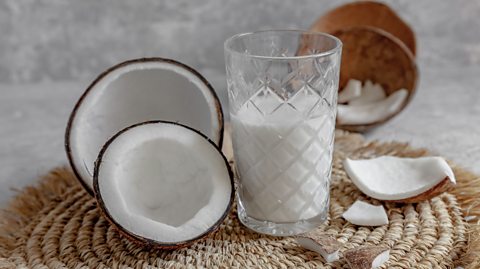Some like it hot – others like it even hotter.
Whatever the dish, it seems as if a spicy, red-hot version is available. Pizzas come loaded with hot sauce, your cheeky chicken dish can be served extra extra hot and some people even go for chillies in their chocolate.
But for those of us who prefer our flavours a little milder, it can seem baffling as to why someone would order from the hotter end of the menu.
±«Óătv Bitesize explores why some people actually enjoy eating spicy foods.
Variety is the spice of life
When you tuck into your next red-hot curry, you won’t technically be able to taste the heat.
Our tongues can only detect five main tastes – sweet, salty, bitter, sour and umami, which is associated with savoury flavours.
What we actually feel when we have something spicy is a type of pain.
There are a group of receptors in our mouths that primarily work to detect the actual temperature of food or drink, to prevent us from eating or drinking anything too hot.
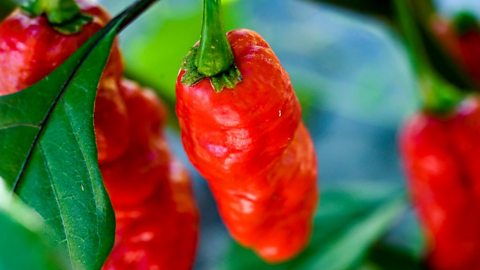
But these receptors also have a dual function and can bind to other chemicals in our mouths.
Most spicy food will contain the chemical capsaicin – it’s found in things like chillies or jalapeño peppers and acts as a deterrent to mammals who might snack on them and prevent further crops from growing.
When our receptors detect capsaicin, it triggers a reaction. It’s not unlike what would happen if we ate something before it cooled down and it can leave the mouth feeling incredibly hot.
Just as would happen if we burnt or scalded our mouths on something too hot, it triggers a pain response – but that doesn’t mean that we should always avoid something spicy if it’s something we enjoy.
Spice up your life
So if those spices are causing us pain, why do so many of us choose the hottest dishes on a menu?
When our bodies notice the pain caused by the chillies, they respond by producing certain chemicals – adrenaline, for example, which increases the heart and breathing rates as the body prepares for 'fight or flight'.
What some scientists believe may follow is the release of endorphins. Endorphins are a type of neurotransmitter – a unique molecule in the brain that sends chemical messages between brain cells in the gap between them known as the synapse.
The endorphins can act as a natural painkiller to relieve some of the unpleasant sensations caused by the chilli and in some cases, even produce a pleasant sensation – although this may not happen to everyone. This theory could explain why some people love very spicy food – endorphins are the same feel-good chemicals released during activities such as exercise.
The idea of an intense, stressful takeaway won't be everyone's cup of tea. In some cases, eating extremely hot food - such as the world's hottest pepper, the Carolina Reaper - can make people unwell, and for those with existing digestive health concerns, it can worsen conditions such as irritable bowel syndrome and heartburn.
However, there are some health benefits to eating spicy food as part of a balanced diet. Some of the compounds of capsaicin can increase energy and your body’s metabolism.
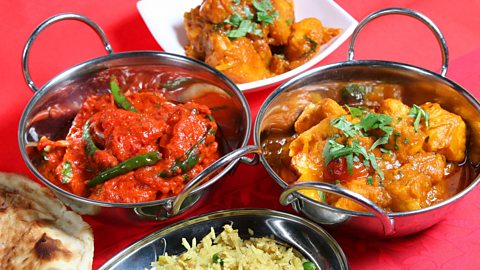
Moreover, a 2017 study carried out by researchers at the University of Vermont looked into the food habits of 16,000 Americans over an average period of almost 19 years. It found that those who regularly ate red hot chillies were 13% less likely to die during that period than those who didn’t - the researchers thought that the capsaicin might have helped to increase blood flow, or to positively alter the mix of gut bacteria.
Ultimately, the choice between a mild or spicier dish comes down to a personal preference. Liking or disliking spicy food isn’t part of our genetical makeup. Nobody is born with a love of hot chillies – rather it’s something that most of us are able to learn, if we want to.
If a child is given something spicy, they may not enjoy it the first time – often they’ll be hesitant about eating the same food when given to them again. Repeated exposure to capsaicin can help them to build up a tolerance, at which point more spice can potentially be added into the mix. Those warning signals and fiery sensations in the mouth are our body’s way of telling us that it might not be time to step up from the korma to the madras just yet, or at all.
Stay away from the water
If the heat gets too much, you might be tempted to wash it down with some water – but that will most likely just make things worse.
Water is made up of polar molecules, while capsaicin has a non-polar molecular structure. When capsaicin mixes with water, the chemical doesn’t break down – it will only dissolve in another non-polar substance. Milk and dairy products contain the right molecules to help to separate the capsaicin from the receptors in our mouths and cool us down when things get too tough.
It can also become easier to take on spicy food as you get older. Our sense of taste can slightly decrease in later late, meaning food that had previously been intolerable can become somewhat easier to stomach.
This article was published in January 2022.

Four things you didn’t know you could do with food waste
Before you chuck it out, read this!
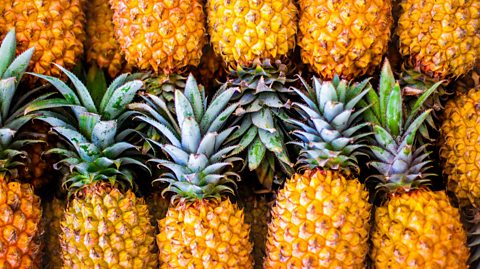
Dumplings from around the world
Dumplings are an incredibly important food in lots of cultures - here are three and their stories.
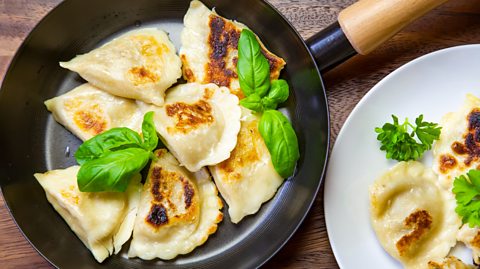
The fascinating history of plant milks
While dairy-free choices may seem relatively new, some of them date back thousands of years.
